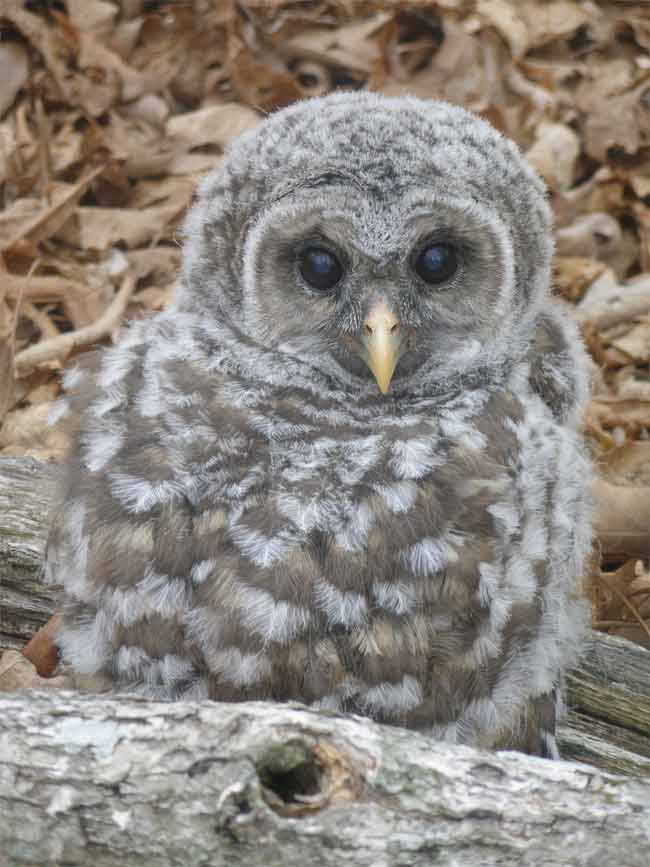Owls Get Wise to Better Life in Cities

Old-growth forests and rural settings are so yesterday, at least for barred owls. The large raptors are thriving in the biggest city in North Carolina, where groomed yards with sparse trees serve as a first-class habitat and cars are the birds' only moving threat.
Results from an extensive survey of barred owls (Strix varia) in Charlotte, N.C., are surprising to some biologists, who had assumed the owl species would have trouble in an urban setting.
“If you read about barred owls in the textbooks, it says they need large stands of old-growth forest to survive,” said Rob Bierregaard, an ecologist and ornithologist at the University of North Carolina at Charlotte, who has directed an ongoing study for the past six years. “Either the barred owls in Charlotte haven’t read that book or the book is wrong, because they are really here and apparently doing quite well.”
The team concluded there is a third possibility: that old suburban neighborhoods in fact are an old-growth forest, at least as far as the barred owls are concerned.
Prime real estate
A century ago, Charlotte was blanketed in rolling farmland, providing few or no suitable tree homes for barred owls. As the land was replaced by residential neighborhoods and the associated backyard trees, Charlotte became prime raptor real estate.
“As the farms have been abandoned, the new neighborhoods that replaced them have planted trees,” Bierregaard said. “If you wait long enough, the barred owls are going to expand their territory, as the trees start to grow up in the newer suburban neighborhoods.”
Get the world’s most fascinating discoveries delivered straight to your inbox.
Since 2001, Bierregaard and his colleagues, along with volunteers, have monitored about 40 nesting sites each year. Residents of the area have given big props to the efforts, reporting sightings of the birds to the Carolina Raptor Center, which sponsored the research. The resulting maps show a dozen or so owl territories in south Charlotte, each about 200 acres (nearly a square kilometer) in area.
In addition, baby barred owls equipped with miniaturized radio transmitters have beamed back their whereabouts as they matured into adults and finally settled within the network of mapped nesting sites.
Urban owls and more
The preliminary findings suggest the urban barred owls are able to reproduce successfully, perhaps even better than in wild forests, as they are churning out babies faster than the adults are dying. When they do die, it is primarily due to disease or collisions with cars.
“We've had a couple die of diseases, but for most of the birds that we have had tagged, where we know how they died, they flew into a car. But it seems that mortality even from that isn’t that high," Bierregaard said. “It certainly seems that they are cranking out enough young to more than make up the difference."
When one owl dies, Bierregaard noted, there are enough owls flying in to fill the vacancy.
Other urban and suburban wildlife successes have included populations of squirrels, Canadian geese, raccoons and deer, all of whose numbers have soared in recent decades in the United States.
- Video: Extraordinary Birds
- Top 10 Species Success Stories
- Vote Now: Birds of Prey
Jeanna Bryner is managing editor of Scientific American. Previously she was editor in chief of Live Science and, prior to that, an editor at Scholastic's Science World magazine. Bryner has an English degree from Salisbury University, a master's degree in biogeochemistry and environmental sciences from the University of Maryland and a graduate science journalism degree from New York University. She has worked as a biologist in Florida, where she monitored wetlands and did field surveys for endangered species, including the gorgeous Florida Scrub Jay. She also received an ocean sciences journalism fellowship from the Woods Hole Oceanographic Institution. She is a firm believer that science is for everyone and that just about everything can be viewed through the lens of science.


